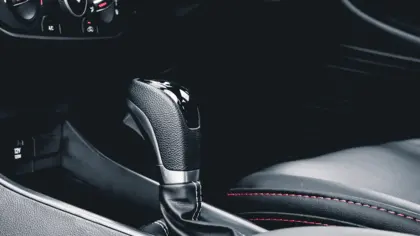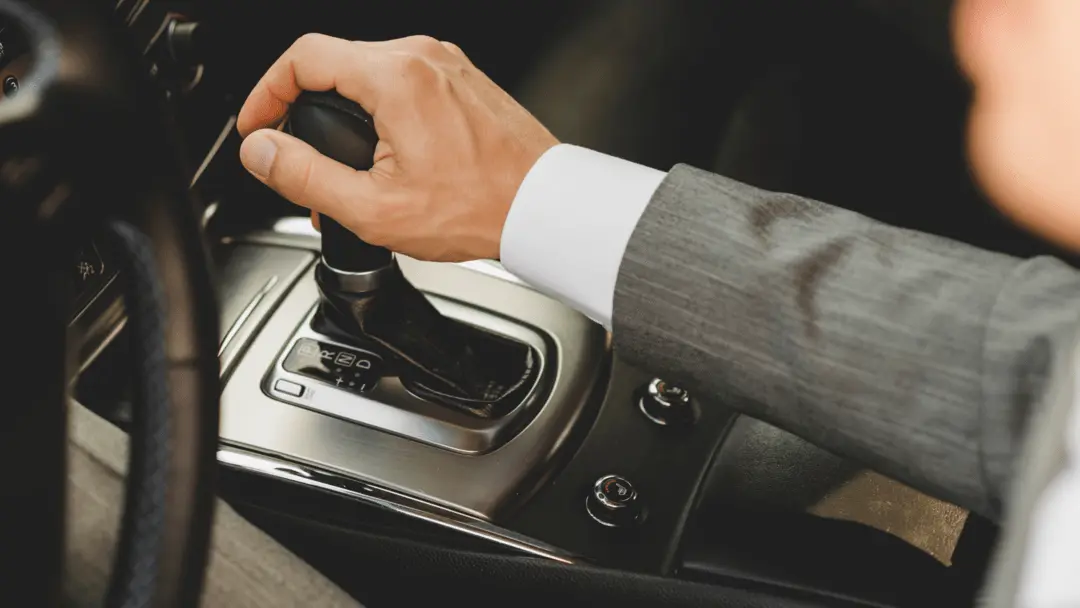Planning for a trip and suddenly the car is not moving but the gear works! Unfortunate situation, right? But Why Does My Car Go Into Gear But Not Move?
The majority of the time, a car won’t move if it has difficulties with the gearbox, clutch, fuel, engine, sensor, ignition, valve body, converter, or a mismatched automatic transmission. Environmental conditions such as rain or cold weather can be considered as additional factors for the problem. Due to transmission problems, you might also hear unusual noises. Therefore, you have to fix any of these problems to run the car again.
So, if you want to know about the car that won’t move the issue in detail, you have to go through the entire article. We can assure you that you won’t leave the site without getting your preferred answer. Let’s talk about this!
Related Article: Truck won’t move in any gear automatic transmission
What Does It Mean When Your Gear Shift Won’t Move?

It’s possible that the car’s failure to move while its gear is performing is due to an internal issue. Your vehicle might have a broken sensor or a slippery automatic transmission as the source of the frequent problem we found that ultimately won’t accelerate or accelerates the car slowly. As a result, you must correctly identify the underlying source of your vehicle’s problem.
What Are The Reasons That Cause Transmission Failure?
The following factors are the main causes of your transmission failure:
- The vehicle is not powered.
- The transmission check engine light or warning light indicates failure.
- Shifts take too long or you miss out on gears.
- Transmission slippage or high engine revs
- The transmission fluid is low.
- transmission fluid leakage.
- transmission clogged filter.
- The issue with the torque converter.
- Solenoid problems
- A burning smell indicates a gearbox issue.
- You will hear humming, buzzing, or other strange sounds.
Car Doesn’t Move But Changes Gear-12 Causes and Solutions

Clutch System Failure
In the middle of the motor’s flywheel, the clutch system controls how the engine connects and disconnects with the entire transmission system. The clutch disc, master cylinder, releasing cylinder, bearing, fork, and clutch cover are the six components that form the clutch system.
A defective clutch system is typically identified by a weak clutch pedal, inability to keep the clutch in gear, grinding noise, or burned smell.
Your vehicle may stall if the clutch breaks since it links the gearbox to the engine. Your car might become stuck in backward or third gear. In addition, the car’s worn-out clutch disc from repeated use. However, you need to repair or replace it immediately.
Damaged Synchronizer Ring
The main purpose of the synchronizer ring is to efficiently connect the vehicle’s single gear. You will discover tiny teeth where the hub sleeve can connect with it and cause the synchro ring to engage. The shift synchronizer rings inside the transmission are broken if your car won’t move. Therefore, the repair is a must!
Transmission Issue
Especially in the case of a sports racing car, aggressive driving can cause your transmission to wear down more quickly. Make sure you diagnose the problem inside if you feel like your transmission is sliding or your car is acting strangely.
Modern cars depend on a computer to notify the gearbox when to shift into gear based on your preferences, and you might need to have the computer system inspected for error codes. The vehicle’s engine control unit, or ECU, manages the present automatic gearbox. The ECU uses factors such as engine speed and throttle position to choose when to switch the transmission.
Related Transmission: Subaru transmission problems symptoms?
Low Fluid Level of Transmission
Because of a leak, poor maintenance, water intrusion during off-road or flooding environments, low transmission fluid or low oil levels, and unclean transmission fluid conditions are all possible. Low fluid levels might cause transmission slippage or excessive engine revs.
When the slave cylinder is compromised or leaks, the fluid pressure will drop. Also, if the pipe is heated, it becomes risky and it might signal a red fluid.
However, you can check with a dipstick, top off the transmission fluid, or look for any potential leakage. After traveling between 30,000 and 60,000 miles, it is advisable to check the oil for lubrication.
Related Fluid: how much brake fluid does a car need?
Transmission Clogged Filter
The car is not moving? Do you regularly check the filter? Another devil can be a damaged air filter or a fuel filter that is blocked or clogged. When the temperature gauge detects overheating, blocked filter results. You might hear a whining noise, and at the worst moment, you might drive erratically until it stops.
In that case, hazardous contaminants must be kept out of the system by the transmission filter. When the filter isn’t changed, dangerous pollutants and debris will gather inside and block the filter. Therefore, swap out the filter every 30,000 miles or every 2 years.
Air and Fuel Delivery Difficulties
When the fuel and air in the engine’s cylinder are suitably combined, your car’s engine can effectively burn its fuel. To function the engine smoothly, you need enough air, and your fuel pump must supply enough gas.
Possibly you will see a bad fuel pressure regulator, a restrictive fuel injector, a broken or poor fuel system, a clogged filtration system, a defective or dirty valve body, and a damaged air filter. Maintenance is essential in order to keep the car running properly.
Engine Mechanical Problem
Compression, spark, and an air-fuel mixture are necessary for the internal gas combustion engine, where the compressor operates inside the cylinder. The air-fuel mixture is heated by pressure, which also ensures that the mixture is easily ignited by the spark plug.
The damaged head gaskets, damaged piston rings, cylinder walls, and pistons, problems with the valve and valve train, timing belt problems, chain problems, and low compression that interferes with acceleration are quite a common part of engine mechanical faults. Therefore, before traveling, keep your car’s interior secure.
Exhaust Restrictions
The engine control system may be acting strangely. The primary purpose of the exhaust system is to exhaust gases through the engine and out the vehicle’s tailpipe.
There will be too much reverse pressure and the exhaust gas can flow back into the engine through the valves rather than pass out when the exhaust system is clogged and unable to execute. It ultimately disturbs the movement of the car. So, make sure you fix this part.
Related Exhaust: best exhaust system for Dodge Ram 1500 Hemi
Module and Sensor Troubles
The Powertrain Control Module (PCM), which collects data from different sensors throughout the car, controls the engine, transmission, and other systems. It then provides that data to a computer. For the best riding experience, the PCM manages all the electronics, including sensors and modules.
Due to bad sensors, the acceleration will be poor, including data network issues, PCM problems, failed sensors, and lost connections. Maintenance, though, is important. Depending on the automobile model and labor prices, the cost to replace a PCM range from $800 to $1,500 on average. Keep this in mind!
Ignition Switch Problems
The pressure and energy needed to accelerate the car are fundamentally produced by the ignition system, which ignites the air-fuel mixture inside the engine. The most common ignition problems include a bad distributor, damaged spark plugs, a bad ignition control module, damaged spark plug wires, and a damaged ignition coil. So, a good ignition system should be checked.
Faulty Valve Body
The auto transmission valve body is a complicated system of solenoids, tunnels, and valves that deliver the transmission fluid required for gear changes. Generally, the valve body contains a hydraulic channel. When the shift solenoid is operating, fluid flows through it.
Excessive or frequently used cars can cause difficulties, and dirty fluid will clog the valve body. Ultimately, the truck becomes immobile and stalls. Therefore, drop the gearbox pan to replace the valve body.
Bad Torque Converter
In order to run the car, the torque converter transfers engine power to the wheels through the gearbox fluid. If it develops any problems, it will stop the car from not moving in any gear, making transmission noises, and stalling when attempting to change gears.
The most common causes of a damaged torque converter are using cheap transmission fluid, skipping shifts, leaving the unclean filter in place, and ignoring the warning signs that the torque converter needs repair. It’s an expensive part, so it’s best if you try to maintain it properly.

FAQ
1. Why will my car rev up but won’t move while in gear?
The clutch disc might need to be replaced, or there may be a transmission issue if the car starts but won’t move while in gear.
2. Why won’t my car accelerate when I press the gas?
It’s possible that there is a problem with the movement of air and fuel in your car. An engine that is running lean, or if there is not enough fuel or airflow, can have poor acceleration.
3. Why does my car feel like it’s stuck in gear?
Your car’s computer automatically activates gear changes, but a blocked solenoid in the transmission prevents this from functioning. The limp mode, brought on by bad sensors, can also be a problem.
4. Can you drive a car with a broken shifter cable?
The transmission will stay in the same gear even if you change the shifter to any position due to the broken cable. Unfortunately, the shifter handle won’t turn back to its neutral position.
Conclusion
Actually, the gear is shifting but the car is not moving. This used to be a frustrating situation. But now we hope you have got your reasons and solutions for “Why Does My Car Go Into Gear But Not Move?” It is commonly caused by transmission problems, clutch and synchronizer issues, air and fuel troubles, converter, valve body, or maybe ignition and module problems.
If you have followed our article, you won’t have trouble starting and moving the car. We hope the benefits from this article will encourage you to visit our site for more information. Till then, enjoy the trip after fixing the problem!

